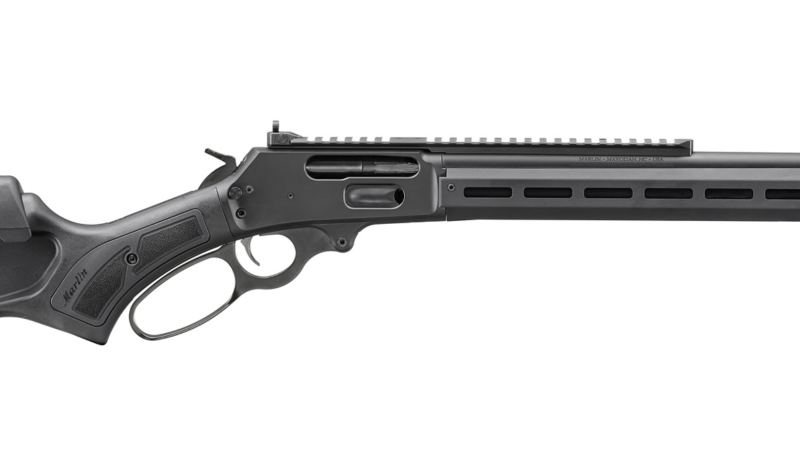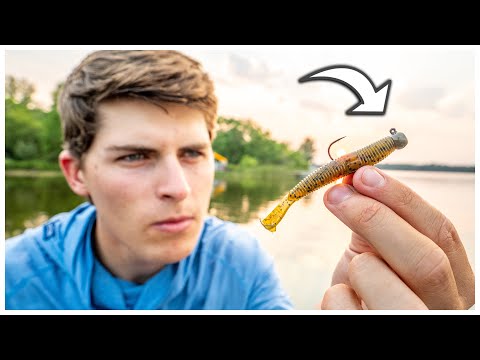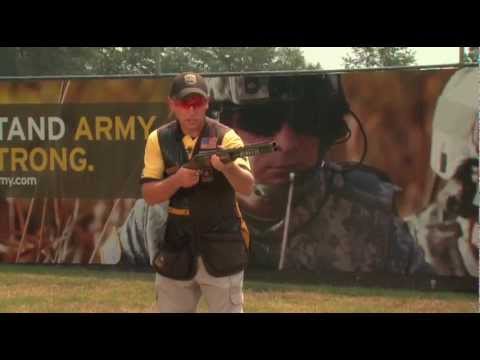The 4 Best Avalanche Beacons of 2024, Tested and Reviewed
We may earn revenue from the products available on this page and participate in affiliate programs. Learn More ›
Avalanche beacons (otherwise called avalanche transceivers) can save your life when snowmobiling, skiing, hunting, or hiking in avalanche terrain. Before heading out, each member of your party turns their beacon on send mode and wears it on their person the entire time they’re in avalanche terrain. In the event someone is buried by an avalanche, the rest of your group can turn their beacons to search mode, which allows them to track other beacons in send mode, even when they are buried under the snow.
However, your beacon is useless without the accompanying avalanche probe, shovel, and the knowledge and training to use them in tandem. The goal is to never have to use your beacon, but to be sufficiently practiced in the event of a high stress situation. I broke down the specifications for and practiced with the best avalanche beacons on the market to help you decide which is best for you.
- Best Overall: Mammut Barryvox
- Best New Tech: Ortovox Diract Voice
- Longest Range: Arva Neo BT Pro
- Best Value: BCA Tracker 3+
How I Tested the Best Avalanche Beacons
Ashley Thess
I spoke with Ben Pritchett, a Colorado Avalanche Information Center (CAIC) forecaster, about the importance of training with your avalanche beacon and maintaining it. Pritchett has a quiver of beacons that he practices with so he can help students use their transceivers, no matter what models. Any new three-antenna avalanche beacon on the market today is just fine from a safety standpoint, says Pritchett.
That’s not to say they are all the same, though. Today’s transceivers are incorporating new features and have varying specs. I practiced with a number of models and compared the features of each below. Just remember, no matter which of the best avalanche transceivers you choose, you should take an avalanche level 1 course and be well-practiced before taking it into avalanche terrain. Also take a look at my Things to Consider section below to understand some of the limitations and maintenance requirements of the best avalanche beacons.
Read Next: I Took an Avalanche Course to Learn How to (Probably) Not Die in the Mountains
Best Avalanche Beacons: Reviews & Recommendations
Best Overall: Mammut Barryvox
Key Features
- Weight: 7.4 ounces
- Search Strip Width: 70 meters
- Operating Temperature: -25ºC, -13ºF
- Battery: Three alkaline AAA
- Group check
- Ongoing self-testing
- Updatable software
- Warranty: 5 years with registration
Pros
- Fast
- Reliable
- Durable case
- One of the longest ranges on the market
- Lowest operating temperature
Cons
- Not the longest range
The Mammut Barryvox is the best overall beacon because it’s reliable, fast, and has one of the longest ranges on the market. It’s the beacon I’d recommend to anyone who asks and it’s the one I use regularly.
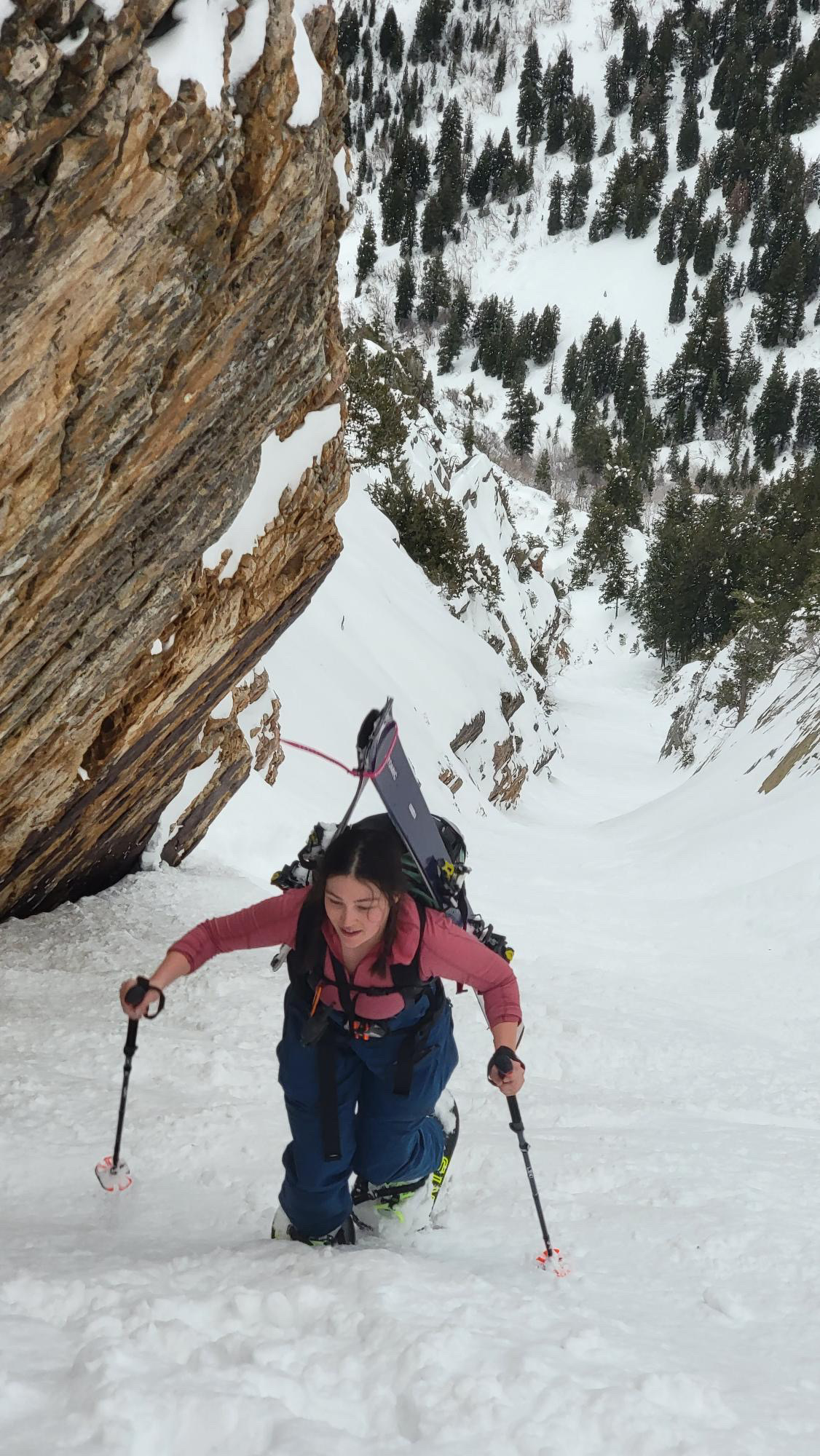
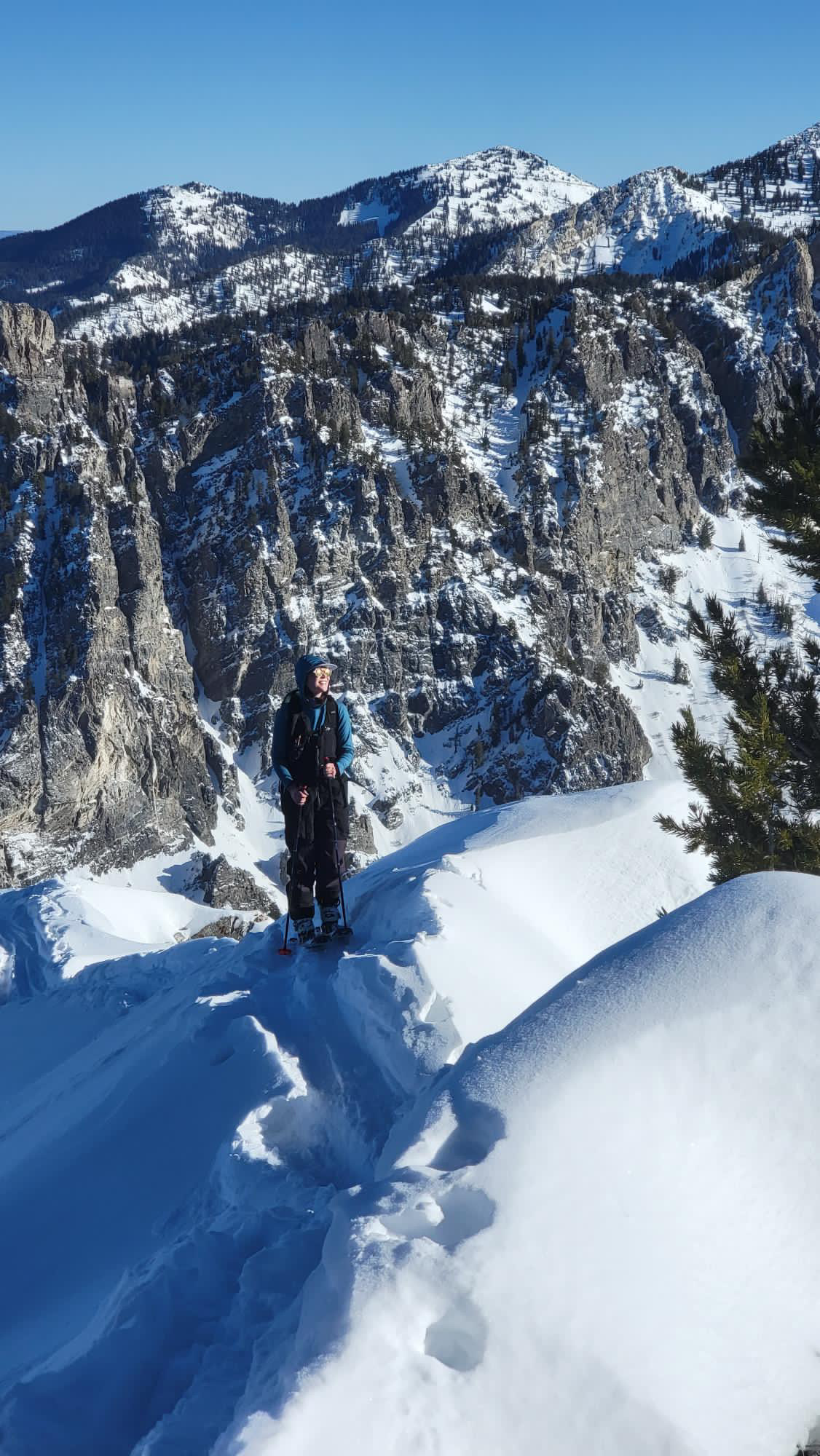
In the wake of an avalanche, you may have lost sight of the victim, and there may be no visual cues (such as a lost ski pole or glove) to indicate where you should start searching. In those instances, assuming the path is safe, the rescuer would transition their beacon to search mode and descend the debris field in a zig-zag fashion to locate a signal.
During a signal search, the American Institute for Avalanche Research and Education (AIARE) recommends moving in 30-meter-wide strips to account for a vertically oriented beacon (more on this in my review of the Ortovox Diract Voice), older beacons, beacons with shorter ranges, and humans’ natural inability to accurately estimate distances. The Barryvox’s maximum search strip width is 70 meters, meaning the device can pick up a signal within 70 meters.
I don’t know about you, but if an avalanche takes out my partner, and I lose sight of them as they are buried underneath snow that quickly turns stiff as concrete, I am going to be desperate to find their beacon signal. As important as it is to stay calm and focused in a rescue scenario, if my transceiver can immediately tell me where my friend is buried, it’s going to be a whole lot easier.
Ashley Thess
During my avalanche level 1 course, I was the last student to participate in the mock burial. I walked away from my classmates and faced the opposite direction so they could hide an extra beacon in the snow for me to find. When I turned around my Barryvox beacon already had a beeping arrow guiding me. During each of my classmates’ turns, they had to initiate a zig-zag search pattern to acquire a signal, but I was able to immediately begin a course search, following my avalanche beacon’s direction. That’s the beauty of a large range, you can acquire a signal sooner, or cover more area faster to find one.
The Barryvox doesn’t have the longest range on this list (the Arva Neo BT Pro does), but its impressive 70 meters coupled with reliable performance, fast processing, and stellar harness and carrying case make it the best overall.
Ashley Thess
The Barryvox conducts ongoing battery tests and send tests to ensure it is working. The harness also features a hard case, which I found to be more durable than the soft cases included with the rest of the best avalanche beacons. The harness also features a SafeLock system to prevent an accidental transition into search mode.
Best New Tech: Ortovox Diract Voice
Key Features
- Weight: 7.4 ounces
- Search Strip Width: Max 50 meters
- Operating Temperature: -20ºC, -4ºF
- Group Check: Four
- Rechargeable lithium battery
- Integrated voice navigation
- Smart-Antenna Technology
- Bluetooth connect to app
- Recco reflector
- Permanent self-testing and standby mode
- Warranty: 5 years with registration
Pros
- Voice instructs you as you search
- Smart-Antenna Technology
- Rechargeable
Cons
- Average range
- Can’t carry extra batteries
I’ll be honest; I thought the voice navigation would be annoying. But it turns out, in a stressful situation where you might have only minutes to locate and dig out a friend, a voice telling you what to do is incredibly helpful and comforting. I’ve only practiced with the Diract Voice, but the narration also reinforces the tasks you’re supposed to be performing by walking you through the signal, course, and fine searches while adding useful directional cues. The Diract can even alert you to too much interference from other electronics. You can also disable the voice function in the app when Bluetooth-connected to your transceiver.
Ashley Thes
But the coolest feature of the Ortovox Diract Voice is the Smart-Antenna Technology. All new avalanche beacons on the market today have three antennas. This means that when you’re searching for a beacon, your transceiver uses all three antennas (X, Y, and Z) to locate a signal, but when the beacon is transmitting, it only uses the X antenna. Beacons transmit in what’s called a flux line, which is not a straight line. The signal emits from the device in an oval pattern, which is why, when searching, you follow a curved line to your target. It’s also why you’re trained to keep your beacon steadily oriented parallel to the ground during a search.
Ortovox
The issue is, if the victim’s beacon is oriented vertically, the signal is emitting towards the sky, resulting in weak coupling with searchers’ beacons. Smart-Antenna Technology allows the Diract to switch its emitting antenna between X and Y based on the device’s orientation, giving you the best possible coupling to receiving beacons. This cuts down on search time, meaning you have a better chance at being recovered quickly, and alive.
The battery in the Diract is also unique. Most beacons take three AAA alkaline batteries, though some will take lithium batteries if you change the settings to lithium. Mentors and instructors will tell you to never use rechargeable batteries because they can die unexpectedly and aren’t reliable. But Ortovox has created a beacon with a low-temperature rechargeable battery that will not leak, as you can sometimes encounter with normal batteries. It operates as low as -20°C, and allows you to recharge instead of replacing the batteries. This means you can’t carry extra batteries for your beacon. If it isn’t charged at the trailhead, you have to go home. Though, you shouldn’t leave the house with any beacon that isn’t charged over 50 percent anyway.
Longest Range: Arva Neo BT Pro
Key Features
- Weight: 7.5 ounces
- Search Strip Width: 80 meters
- Operating Temperature: -20ºC, -4ºF
- Battery: Three alkaline (or lithium) AAA
- Group check with scrolling function
- Bluetooth connect to app
- Analog mode
- Standby mode
- Updatable software
- Warranty: 5 years with registration
Pros
- Customizable settings
- Longest range
- Can use alkaline or lithium batteries
Cons
- Right sided controls make it awkward to turn on for right-handed users
The Arva Neo BT Pro has pro in the name for a reason. The 80+ meter search width and highly customizable features make it a solid tool for complex burials. Though it’s still simple enough for a beginner to use, the analog mode is for practiced professionals familiar with older analog beacons. While all beacons are now digital, some allow users to switch back to analog where a sound gets louder as you move closer to the victim. In digital mode the device gains a signal and then turns it into much clearer directions: a pointing arrow and a digital beeping sound signaling your proximity to the victim. Analog mode can increase the device’s range and battery life, but most users should stay in digital mode because it’s much easier, and therefore faster to efficiently use.
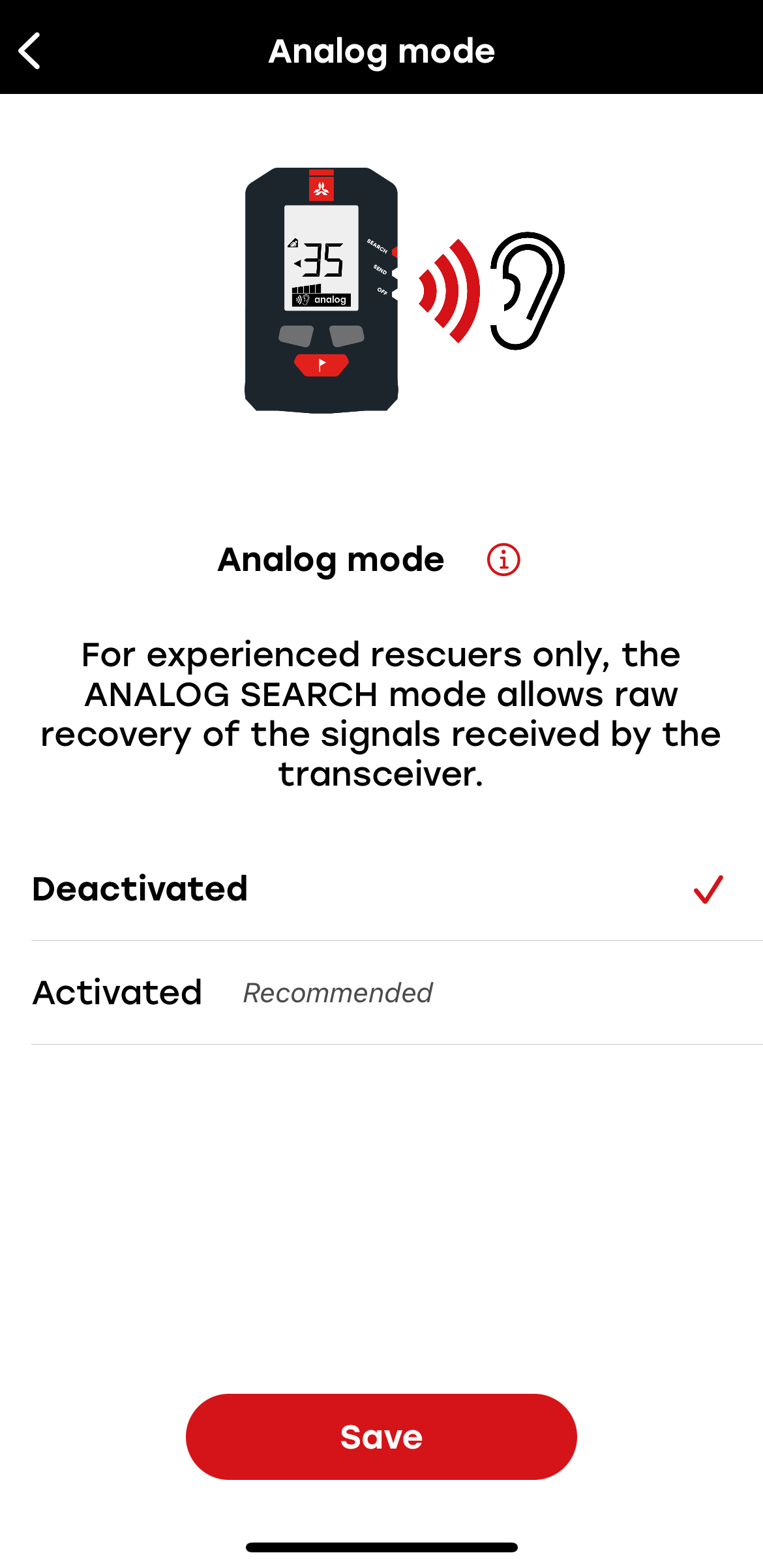
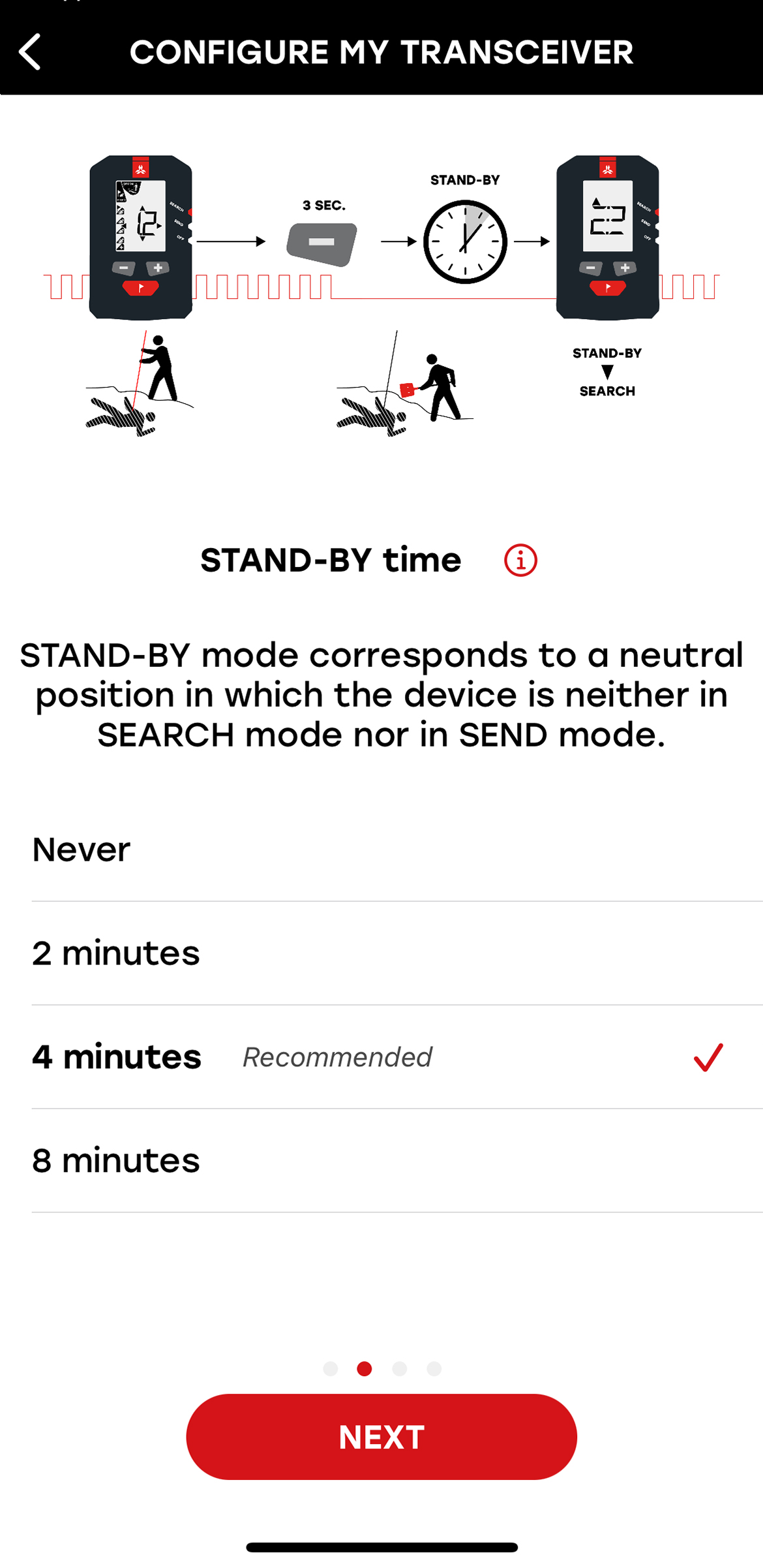
Standby mode, also featured on the Ortovox Diract Voice, is for a scenario involving multiple rescuers that only need to follow one beacon in search mode. So as not to confuse the beacon being used to locate the victim, other rescuers can switch into standby mode for a set amount of time to suppress their own signal while they dig, administer first aid, or call for help. All of the beacons on this list feature a motion-sensing auto revert. On the Arva you can select two, four, or eight minutes of inactivity to trigger your device back into send mode in the event of a secondary avalanche, or hangfire.
Ashley Thess
The group check feature allows you to flag up to four signals (a + indicates more than four). The Neo BT Pro has the unique ability to scroll between marks as well. Overall this beacon is highly customizable with the longest range on this list. My only complaint is that the right sided controls make it awkward for right-handed users to push down the button while toggling the switch to turn on the device or switch between modes.
Best Value: BCA Tracker 3+
Key Features
- Weight: 7.6 ounces
- Search Strip Width: 50 meters
- Operating Temperature: -20ºC, -4ºF
- Battery: Three alkaline AAA
- Group check with multiple burial icons
- Signal suppression
- Big picture mode
- Updatable software
- Warranty: 5 years limited
Pros
- Affordable
- Settings to assist with multiple burials
- Comfortable harness
Cons
- Average range of 50 to 55 meters
- Can only update software with a PC, no Macs
I used a BCA Tracker 3 on my first few backcountry ski tours and felt it was a quality beginner-friendly beacon. It also has a number of slightly more complex features in the albeit unlikely event of multiple burials. Signal suppression operates similarly to flagging a signal on other transceivers. A rescuer faced with multiple burials can suppress a stronger signal once the victim is located, while other rescuers probe and dig. The original searcher can then move on to locating a weaker signal. After three minutes, the Tracker 3+ reverts back to regular search mode.
If you activate big picture mode by holding down the options button, the beacon will tell you the distance of multiple burials. In this scenario you can divide up tasks amongst rescuers in the most efficient way to recover the victims. To switch between signal suppression and big picture modes, you must first go back to search, then select your next mode.
While the Tracker 3+ has a motion-detecting auto revert feature, the beacon will not automatically turn on the auto-revert feature. You have to select it using the options key in the event of a rescue scenario. Then, if you’re stationary for one minute, the beacon will switch back to send mode. If you’re in constant motion, it will revert in five minutes. Either way, you will get a 30 second warning before you switch back into send.
Ashley Thess
The range is average, and there is an odd downside that you can only update your software using a PC, but these minor drawbacks don’t detract from this affordable and capable beacon. Plus, the harness is comfortable with a padded shoulder strap and conveniently coiled bungee lanyard.
The Rest of the Field
The market for avalanche beacons is not large. In addition to the four brands mentioned here, there are Pieps and Black Diamond beacons, both manufactured by Pieps. These beacons could perform as advertised just like the other digital three-antena beacons I covered here. Though, mentors and partners might say something along the lines of, “Buy anything but a Black Diamond beacon,” a phrase I heard multiple times when I was acquiring the necessary backcountry ski gear.
That’s because there’s a dark history behind some alleged product failures associated with these brands. Julia Tellman at Powder Magazine did a deep and disturbing dive into the events that transpired just four years ago. An avalanche in Teton Pass, Wyoming, buried a young, experienced backcountry splitboarder. His partner was unable to locate a beacon signal, and he was found the following morning under 2 feet of snow with his Pieps DSP Sport beacon turned off.
It’s impossible to say if the beacon malfunctioned in accordance with numerous other cases and complaints brought to Pieps and Black Diamond before and after the incident. These beacons have since been removed from the market, with new models taking their place.
Things to Consider Before Buying the Best Avalanche Beacon
Brady Evans
All avalanche transceivers available for sale today are digital with three antennas and transmit 457 kHz. These are the basic safety requirements. The best avalanche beacons that I’ve covered here all feature motion-sensored automatic switchover in case a secondary avalanche occurs while you are in search mode. I think this is a very worthy feature, though some beacons handle it differently so pay attention to the specific model you choose.
Training
Avalanche transceivers do not repel avalanches, and they’re only one piece of a three part safety gear system. You need all three to effectively perform a rescue: avalanche probe, shovel, and beacon. The beacon picks up a signal, you probe to find the victim, and you dig them out with a shovel. While this sounds simple, you must train and practice with all of your safety equipment so that you’re comfortable enough to efficiently use it on the worst day of your life.
Wearing Your Beacon
Notice I say wear your beacon, not carry it. All of the best avalanche beacons on this list come with a harness to wear across your chest or torso. This is, in my opinion, the best way to wear it so the device is protected by a case. If you are uncovered from the snow, your chest is then the first part of you found to quickly restore airflow.
Ashley Thess
The only other safe way to wear your avalanche beacon is in a beacon-specific pocket in your snow pants, tethered to a ring or loop inside. Always keep your beacon facing towards your body to protect the screen from damage. The downside to keeping your beacon in a pants pocket is that your beacon isn’t in a case and is therefore more susceptible to trauma from a fall, crash, or avalanche.
You shouldn’t put a beacon in a jacket pocket, because if you shed a layer and your beacon is still in your pocket, it’s going to get shoved in a backpack. In the event of an avalanche, your backpack could easily be separated from your body. Your beacon is only useful to rescuers if you are attached to it.
Friends
Ashley Thess
It’s worth noting the obvious here: If you’re buried in an avalanche while wearing a transceiver, it won’t do you much good without a friend who is also wearing an avalanche beacon (and trained to use it) to find you. That’s not to say you don’t need to bother wearing one if you’re alone in avalanche terrain. People have been rescued by strangers or SAR, but don’t count on it. It is always a good idea to travel with a friend or group into avalanche terrain so that you can look out for each other, and God forbid, dig each other out.
Electronic Interference
This is the major limitation of the best avalanche beacons. Your phone, smartwatch, earbuds, heated vest, camera, and any other electrical item can cause interference with a beacon search. The 20/50 rule is that you want your beacon 20 centimeters (8 inches) away from other electronics while transmitting and 50 centimeters (20 inches) away from electronics while searching.
This is another pro to wearing your beacon in a harness: You can effectively keep your phone over 8 inches away in a pants pocket. If you’re searching for someone, you need to turn off and put away heated gloves and smartwatches. During the fine search when you’re holding your beacon low to the ground, heated socks can be a problem.
Snowmobiles, ski lifts, and other vehicles or permanent fixtures can also cause interference. If you’re conducting a beacon search, stay 10 meters (33 feet) away from running snow mobiles, or anyone calling for help on any communication device to avoid confusing the search when minutes count.
Maintenance
It may be tempting to throw out the user manual once you get your beacon, like you might a stereo or power tool manual. However, avalanche transceivers are different and every owner should absolutely read the manual. It isn’t that long. It’s relatively interesting, and you will definitely learn something new about your beacon.
The maintenance section of your manual is important to get the full lifespan out of your device and keep it functioning at the top of its game. Check for software updates and take the batteries out of your device for long storage periods, like the summertime.
FAQs
While I appreciate that avalanche transceivers are expensive, I wouldn’t recommend purchasing one secondhand. This is a potentially life-saving piece of equipment and you don’t know if the previous owner has maintained and cared for it properly. Older models could pose potential threats as well if they have outlived their lifespan, the software hasn’t been updated, they aren’t a three-antena model, or they were under a past recall. Safety gear is not the place to pinch pennies.
Read your beacon’s user manual to determine the lifespan. But typically it is only five years, and most manufacturers recommend sending your beacon in for service after three years.
Final Thoughts Best Avalanche Beacons
While the best avalanche beacons are a hefty investment, they could save your life, or the life of someone else. Anyone recreating or working in avalanche terrain can find a fit for them on this list. Pick the one with the features you prioritize most and train with it to become comfortable with the interface, even in a high-stress situation.
- Best Overall: Mammut Barryvox
- Best New Tech: Ortovox Diract Voice
- Longest Range: Arva Neo BT Pro
- Best Value: BCA Tracker 3+
The post The 4 Best Avalanche Beacons of 2024, Tested and Reviewed appeared first on Outdoor Life.
Source: https://www.outdoorlife.com/gear/best-avalanche-beacons/


